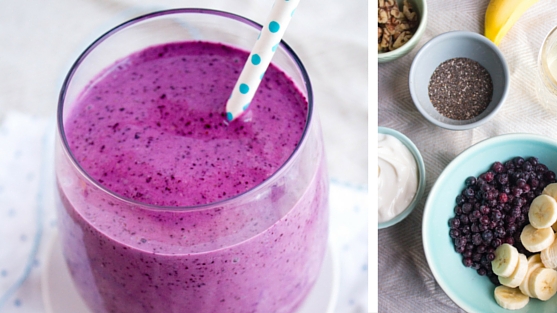What on Earth is an “Anthocyanin”?
If you’re an avid Wild Blueberry eater, chances are you’ve read or heard about how chock-full of antioxidants these tiny, potent berries are – but have you heard about their anthocyanins?
Pronounced “an-tho-sigh-a-nins”, these plant compounds are abundant in Wild Blueberries and give them their pretty purple-blue hue. A growing body of research suggests anthocyanins are beneficial to humans. But, before we dive into that, let’s explore what an anthocyanin really is and how to incorporate more of them into your family’s daily eating regimen.
Breaking Down the What, Where, Why, and How of Anthocyanins – and Why They’re Good for Us
What Anthocyanins Are
Anthocyanins, named for the Greek words for “flower” and “blue,” are part of the flavonoid group of plant compounds. Anthocyanins are antioxidants and are beneficial to the plants: they appear to protect them from the damage of ultraviolet light and other environmental stressors. Dietary antioxidants such as anthocyanins, have been found to have the ability to neutralize free radicals and help prevent cell damage. They are healthy for plants, and research indicates that including anthocyanin-rich foods in our diets is healthy for us, too.
Where They’re Found
We get anthocyanins from a variety of foods, and the easiest way to locate them is by color. As pigments, they’re easy to spot—unlike most other plant compounds. When you see red, purple or blue-hued fruits and vegetables, you know they contain anthocyanins. Berries and their juices contain the most anthocyanins, and Wild Blueberries, in particular, contain a wide range of anthocyanins, and have 33% more total anthocyanins than regular blueberries*. In fact, a study that examined the anthocyanin content of 24 foods found that Wild Blueberries provide significantly more total anthocyanins than other commonly consumed berries in the US including cultivated blueberries. Some other foods that contain anthocyanins include red cabbage, purple potatoes, purple cauliflower, elderberries, black currants, purple carrots, eggplant, red onions, plums, and figs.
*USDA/Food Data Central legacy analysis of 1 cup frozen wild blueberries vs. 1 cup raw blueberries. https://fdc.nal.usda.gov/
Why They’re Good for Our Health
The role of anthocyanins in the human body is still an area of intense investigation, and we clearly don’t know everything there is to know about this large class of compounds. However, we do know that when we eat foods containing anthocyanins, they change form during the digestion process and are extensively modified by the body and also by microflora (bacteria) in the intestines. These modified compounds, generally referred to as metabolites, are plentiful and widely varied. Research indicates that anthocyanins exert their effects indirectly, via their metabolites. These effectsinclude reducing the risk of chronic diseases such as cardiovascular disease, cancer and diabetes. They’re also believed to help protect against inflammation in humans, considered to be a leading factor in brain aging, Alzheimer’s disease and other neurodegenerative diseases. There is a growing body of research that points to anthocyanins being helpful for mood improvement, focus, and memory for kids, teens, and adults. You can dive further into the anthocyanin, brain health, and general health research for wild blueberries by visiting our website.
How You Can Incorporate Anthocyanins into Your Daily Routine?
It’s easy–just add a healthy scoop of Wild Blueberries to your diet every day. Frozen wild blueberries are available in your local grocery store’s freezer aisle – just look for the word “wild” on the package. For recipe inspiration visit our recipe library (add link). Here’s a favorite of ours that’s good for the whole family (even the kids)—Wild Blueberry Brain Boosting Morning Smoothie. Give it a try!

Need more recipe inspiration? Check out our website.

